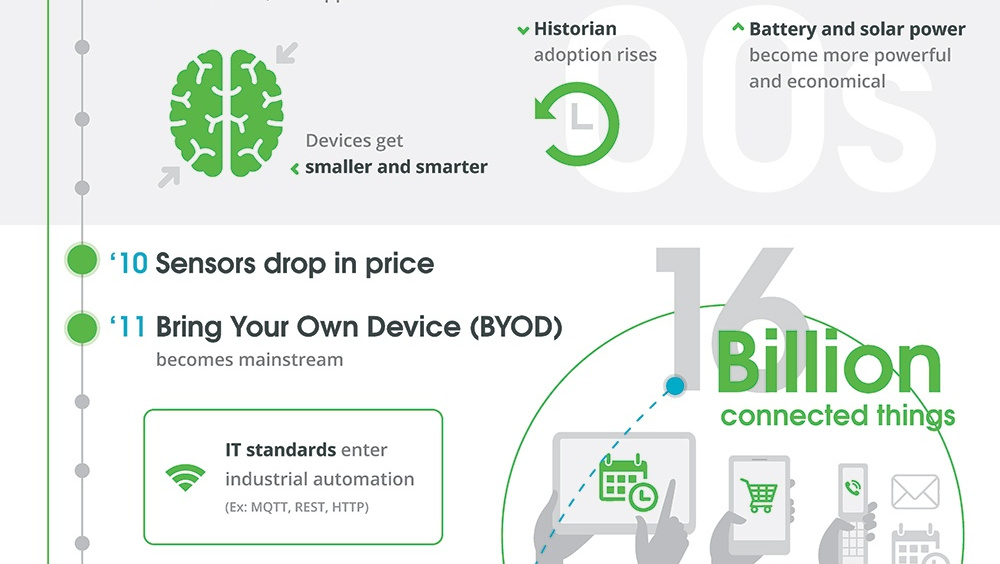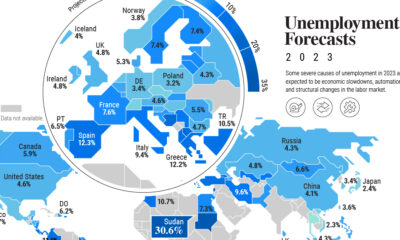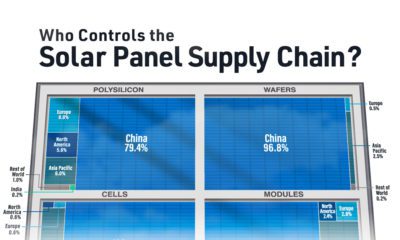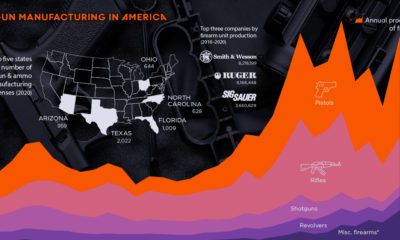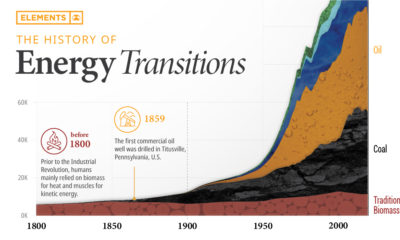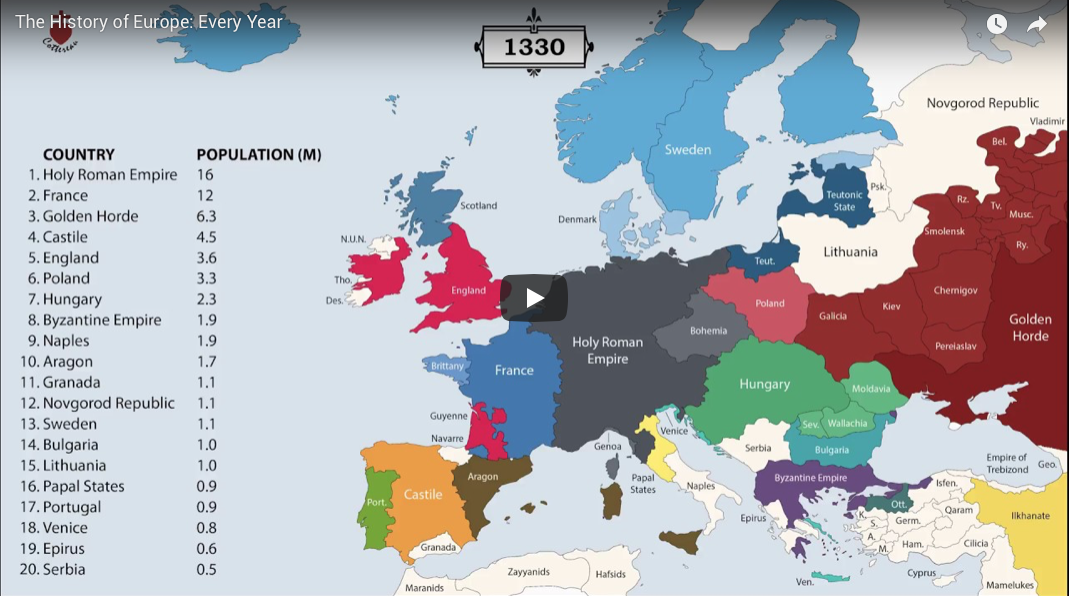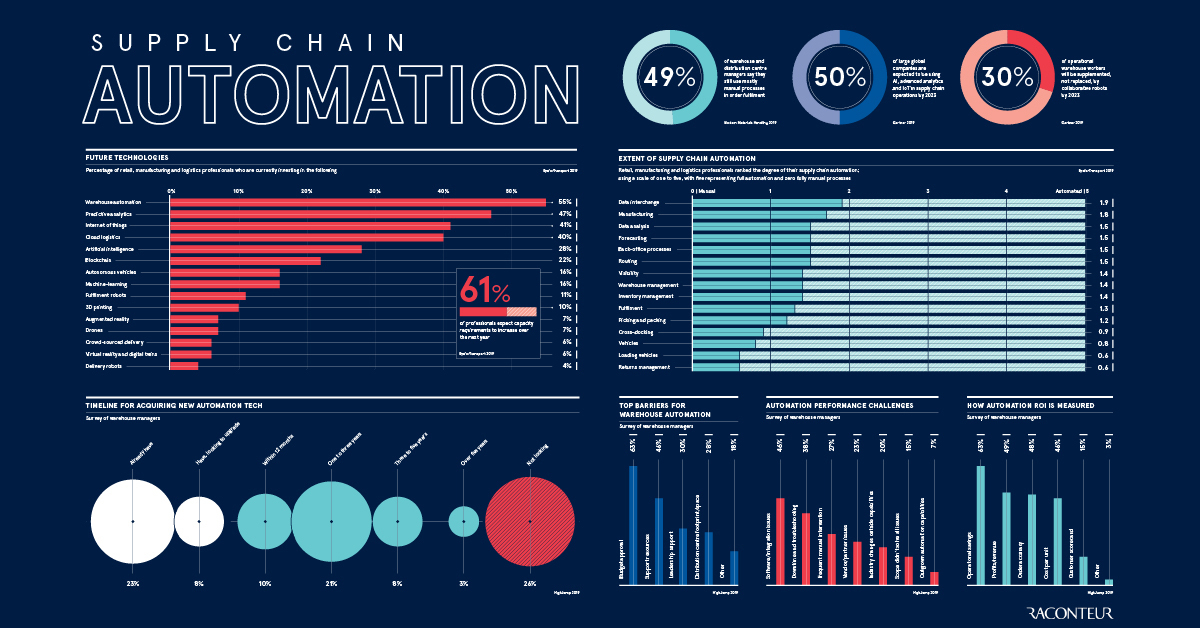In fact, the same circumstances that have led to the explosion in smart consumer gadgets, such as universal wireless connectivity, cloud computing, cheap sensors, and better artificial intelligence, are also being used in conjunction with big data to power the next generation of industry, as well. This new technological layer, called the Industrial Internet of Things (IIoT), is transforming massive industries like manufacturing, energy, mining, and transportation – and it’ll have a multi-trillion dollar impact on the economy as a whole.
The Birth of the Industrial Internet
Today’s infographic comes to us from Kepware, and it shows how these technological forces have emerged over time to make the IIoT possible.
The road to the creation of the IIoT started in 1968, when engineer Dick Morley made one of the most important breakthroughs in manufacturing history. That year, Morley and a group of geek friends invented the programmable logic controller (PLC), which would eventually become irreplaceable in automating assembly lines and industrial robots in factories.
Other Major Innovations
Here are some other major innovations that were instrumental in making the IIoT possible: And today, the IIoT is a big deal: it’s transforming the backbone of major industries by adding a new layer of technology that helps companies optimize operations, track and analyze equipment, implement predictive maintenance, make sense of massive amounts of data, and make real-time decisions that were never before possible.
And by 2030, the IIoT is estimated by Accenture to have a $14.2 trillion on the global economy – making it one of the most important forces shaping the future business world today.
on For this reason, companies around the world are now rethinking their warehouse and distribution systems, with automation taking center stage. Today’s infographic from Raconteur highlights the state of automation across global supply chains, while also providing an outlook for future investment.
Long Time Coming
Let’s start by taking a look at what supply chain technologies are priorities for global industry investment in the first place: *Based on survey of supply chain professionals in retail, manufacturing, and logistics fields As seen above, warehouse automation has already received more investment (55%) than any other supply chain technology on the list, as companies aim to cut delivery times and improve overall margins. Interestingly, other areas receiving significant investment—such as predictive analytics, internet of things, or artificial intelligence—are technologies that could integrate well into the optimization of supply chain automation as well.
Smoothing the Transition
While fully automated supply chains in most industries may still be a few years away, here is how companies are investing in an automated future today: According to the above data, over 70% have already integrated automation technology, or are planning to within the next five years. On the flip side, over a quarter of warehouse managers are not currently looking to integrate any new automation tech into their operations at all.
Adoption Rates and Growth
As supply chain automation gains momentum and industry acceptance, individual processes will have varying adoption rates. Take order fulfillment, for instance. Here, only 4% of current operations are highly automated according to a recent survey from Peerless Research Group: Meanwhile, 49% of operations were primarily manual, illustrating potential for growth in this particular area. It’s worth noting that other individual supply chain components, such as conveyor belts, storage, automated guided vehicles, and shuttle systems, will all have differing trajectories for automation and growth.
Post-COVID Supply Chains
The COVID-19 pandemic has shown us that complex supply chains can become fragile under the right circumstances. As supply chains see increased rates of automation and data collection becomes more integrated into these processes, it’s possible that future risks embedded in these systems could be mitigated.

